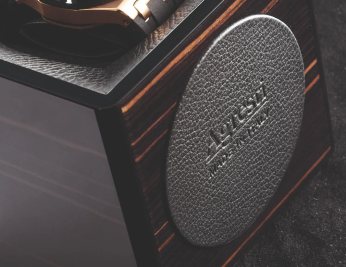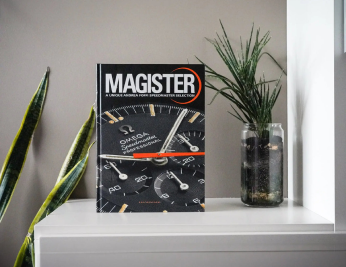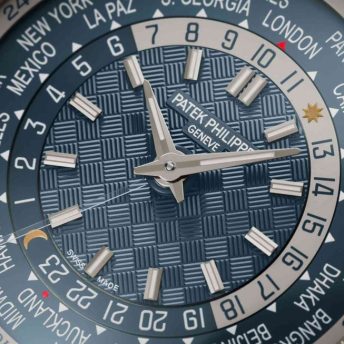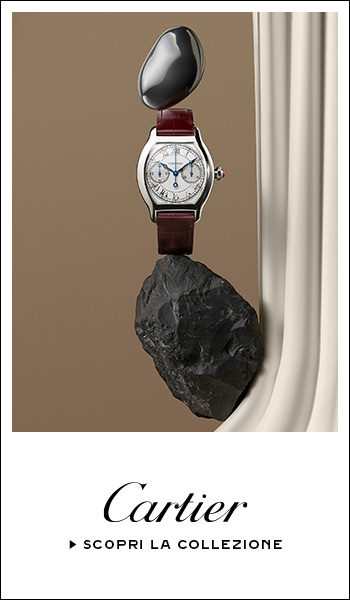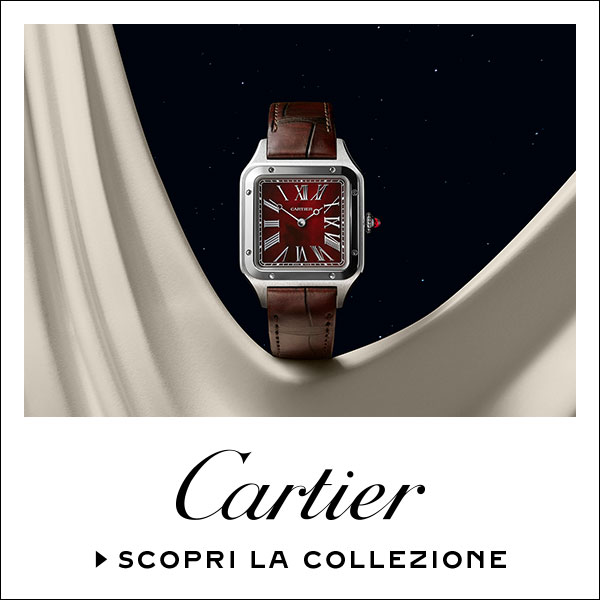Today, we’d like to talk about the Eberhard brand and its Pre-Extra Fort collection. It’s gaining a lot of traction on the aftermarket, and for good reason: it’s very much worth discussing!
We’d like to thank Gabriele Barone for writing this article, which we hope will help you learn something new.
A brief history
The Eberhard watch company was founded in 1887 in Chaux de Fonds. Mr. Eberhard, the founder, was the son of a successful watchmaker from the Swiss capital, Bern.
Only a handful of watchmakers have remained independent across 3 centuries, and Eberhard is one of these elite few.
In three words, the first few decades of the 20th century were “volatile and revolutionary”. From Arts and Literature, to exploring the highest peaks and lowest depths, many changes were occurring in the world. The common denominator? Time, and the measurement of it.
As we all know, a good watch is needed to record it.
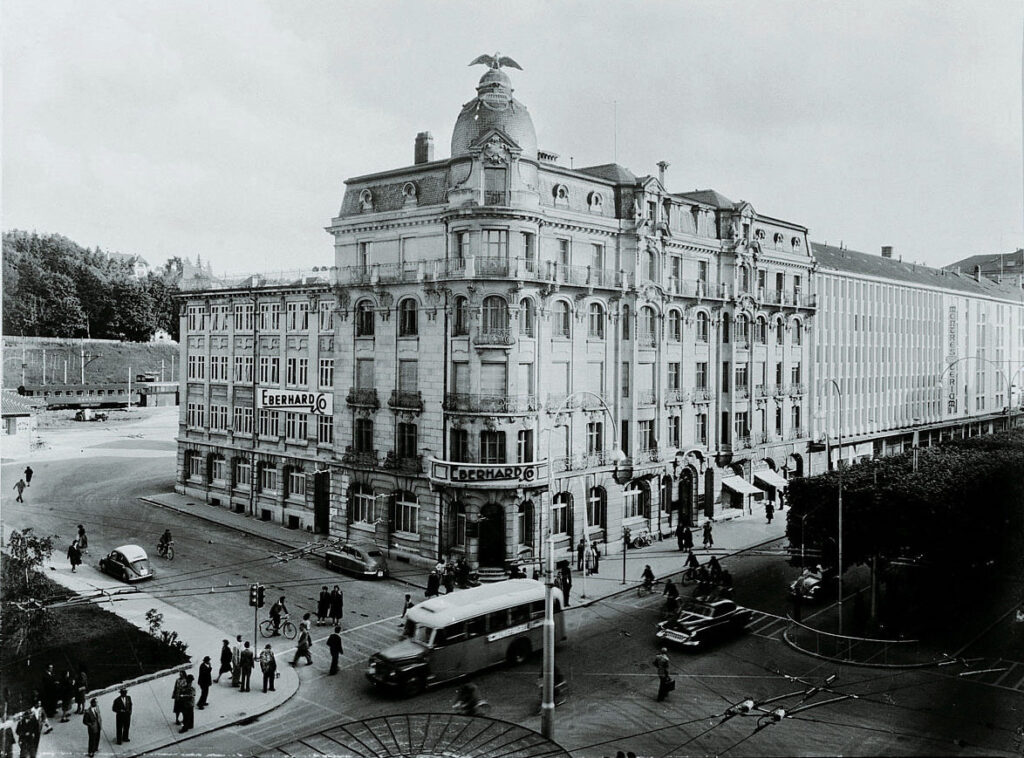
It was, in fact, in this period (1919) when the watchmaker’s first monopusher chronograph was made. This timepiece was based off of a Landeron Hahn 15’’ ½ lignes movement, and featured a hinged case, an outer tachymeter scale and Breguet accents.
This was a huge step forward for the brand, and one of Eberhard’s last before 1926, when he handed the reins over to his sons Georges and Maurice.
1935 was a revolutionary year for Eberhard & Co.: after many years of research and design, they successfully made the first 2-pusher chronograph which could be stopped and restarted without resetting the recorded time, positioned at 4 o’clock. This special pusher was dubbed the “slide”, and allowed for easy recording of intermediate times (as well as the total time elapsed).
In 1938, the so-called “tri subdial” model made its debut.
This extra subdial counter recorded the number of hours which had elapsed for the chronograph.

Shortly after, in 1939, it was the year of the rattrapante: a double-handed chronograph function operated by a pusher nested in the crown.
The base movement was the Valjoux 65 16’’ lignes, dubbed the caliber 16000. Both then and now, this watch was an engineering status symbol.
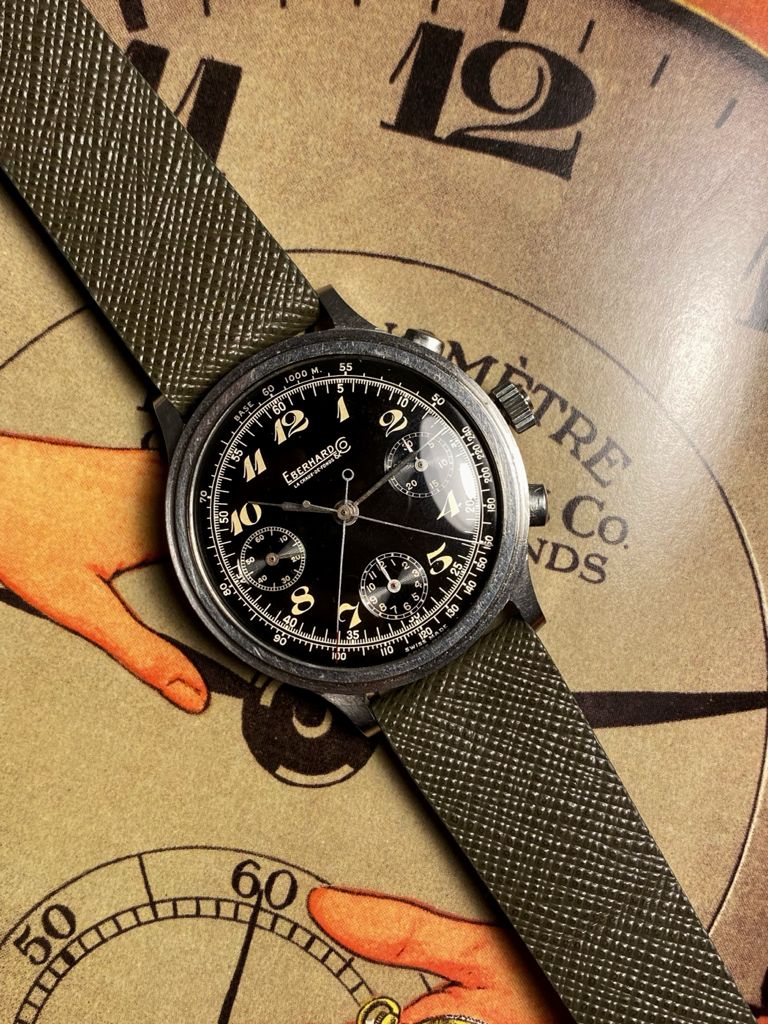
1942: George Eberhard passes away, so Maurice becomes sole owner of the company. This is also the year in which the Extra Fort line was introduced.
Let’s take a step back: what is the Pre-Extra Fort?
Eberhard Pre-Extra Fort was a term coined by Italian collectors, and it refers to (rather self explanatory) the model which came just before the famous Extra Fort collection. It was first used at a time when one couldn’t really pinpoint the exact date of birth of the Extra Fort.
But where does this confusion or uncertainty come from?
In 1935, Eberhard started producing a chronograph with the caliber 16000, and then opted for the cal. 14000 in 1951. Somewhere along the way (earliest evidence is 1942) the name “Extra Fort” appeared in the catalogues. However, none of the dials of the cal. 16000 powered timepieces feature this nomenclature. On the other hand, on nearly all of the cal. 14000 dials, we can see this Extra Fort name.
Ranging from 1600 to 1636, each iteration has a different and unique character to it. If you would like, we can explore this in a dedicated article!
Let’s now take a closer look at this so-called Eberhard Pre-Extra Fort caliber 16000.
Firstly, let’s get a definition out of the way: the Extra Fort name is believed to be in reference to the robustness of the case, which were either made from steel, gold, or gold-plated steel. One interesting detail to note about these cases is their 40mm dimension: this was really large by 1940s standards.
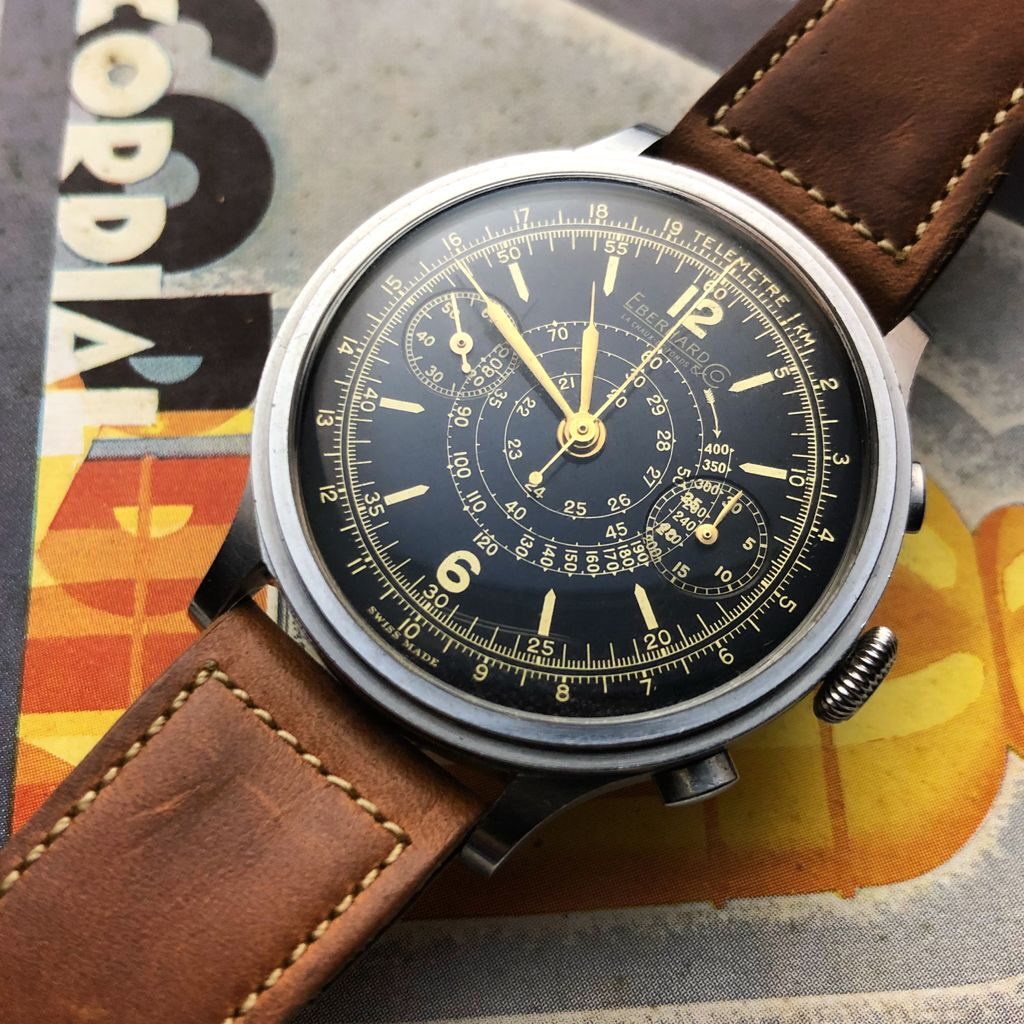
The Movement
The powerhouse that is the caliber 16000 was made by Valjoux, and appears as if it were tailored for Eberhard like the finest of suits.
Measuring 36mm across, the 16 lignes manually wound movement contains: 17 jewels; an anchor escapement; a monometal balance wheel; a Breguet hairspring, and beats to 18000 bph.
If you like nitty-gritty engineering stats, these are all really exciting features.
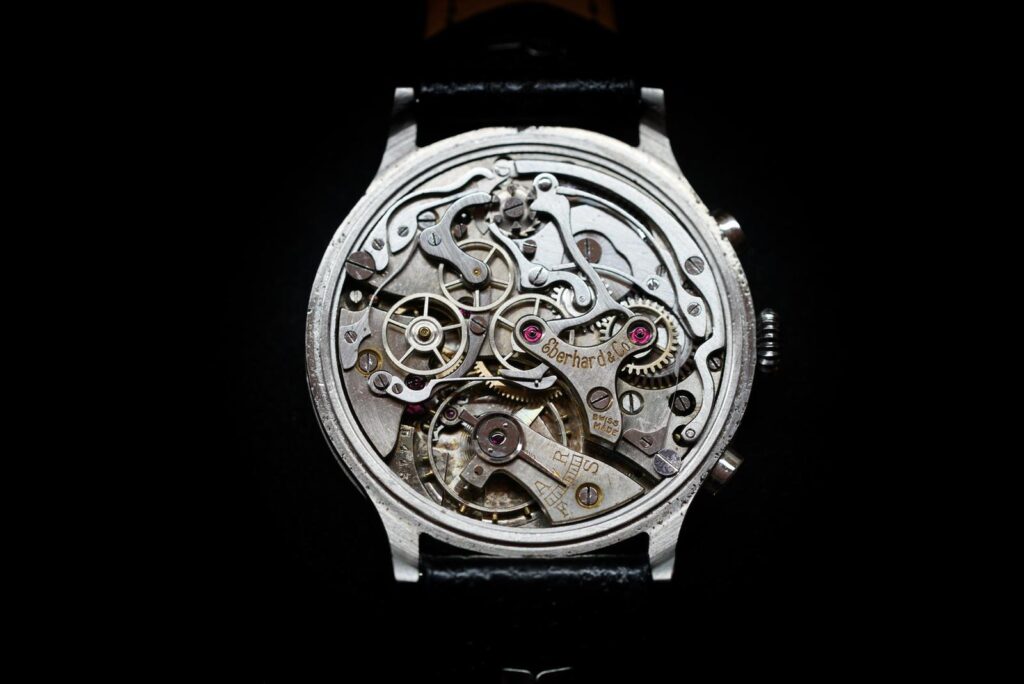
From an aesthetic point of view, the manufacturers of this movement cut no corners: all you need to do is admire the masterful chamfering on the various components of the mechanism.
Mr. Eberhard was always fond of engines, especially those which propelled innovation. This model reflects all that.
The watch certainly looks the part, but it walks the walk, too: muscular both in looks and substance.
For the classical music aficionados out there: if the 13ZN were Puccini’s Boheme, the caliber 16000 would be Wagner’s Ride of the Valkyries.
Although you may not hear its name being mentioned all too often like the others (eg: Valjoux 72, Zenith El Primero, etc.), in my opinion, this is one of the best movements in the history of the chronograph.
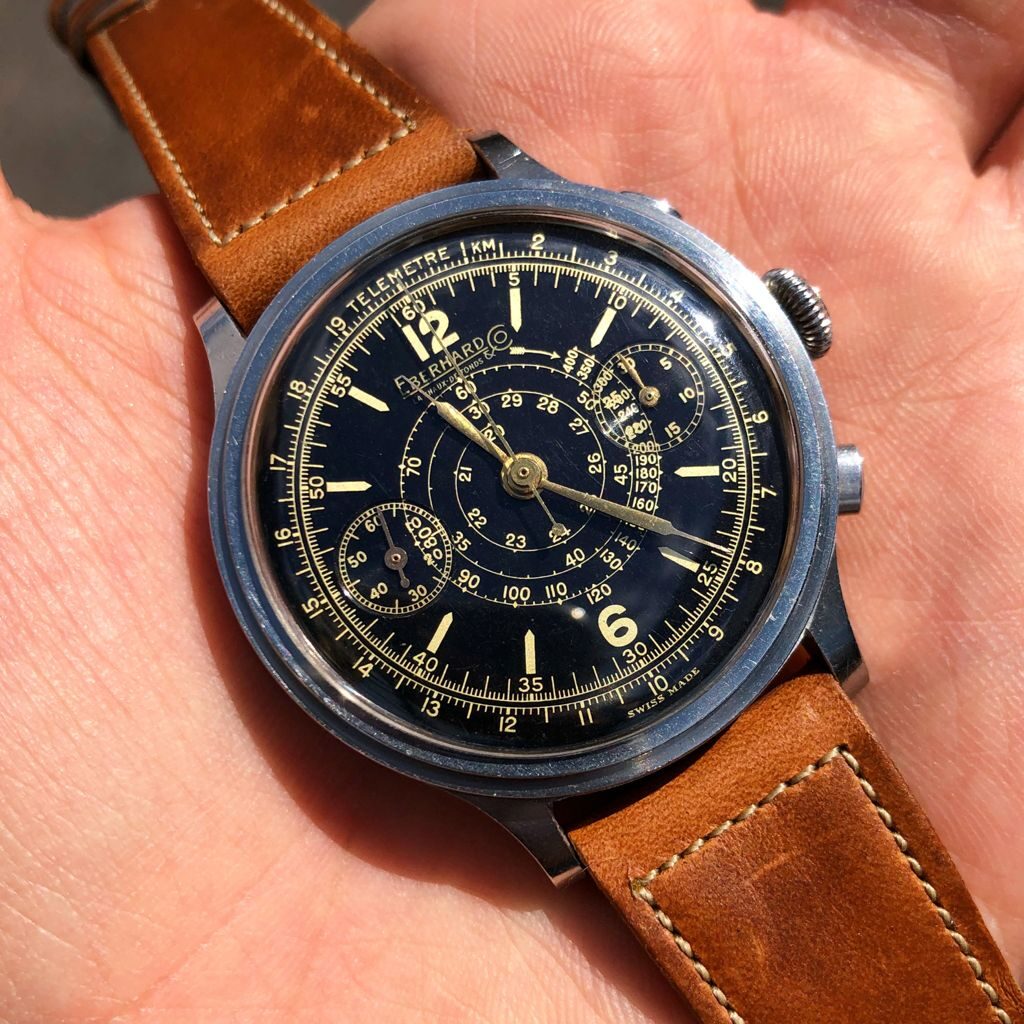
Aesthetics
All the dials were made by ZJ, and had many variants. For example, the “spiral/snail” scale has various iterations: firstly, it is present only on the 2-subdial models, and never on those with 3. Within the 2-subdial line, early exemplars begin the scale at 360, whereas later ones began with 400 and 500.
The typography was so elegant, at the time: very thin – airy – almost. But, this elegance and sophistication proved to be its downfall over time, as they would fade away. For this reason, very few exemplars remain in good condition today.
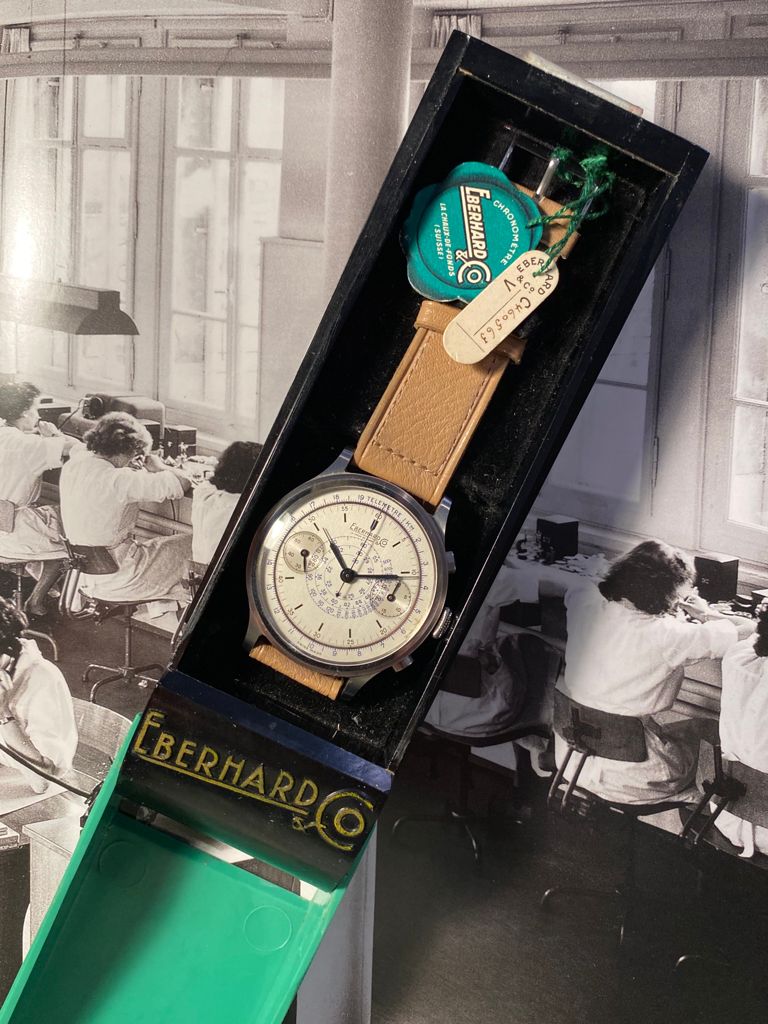
Hopefully this article has helped you learn something totally new! I trust that now you have a newfound respect for a historic timepiece, which most people probably are unlikely to even have heard of!
Article by Gabriele Barone
-Translated by Patrick R.

